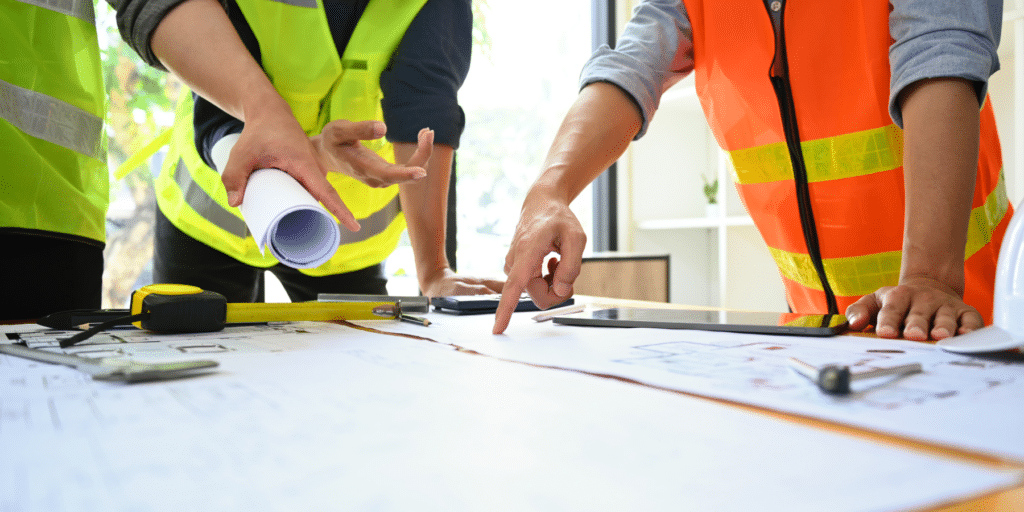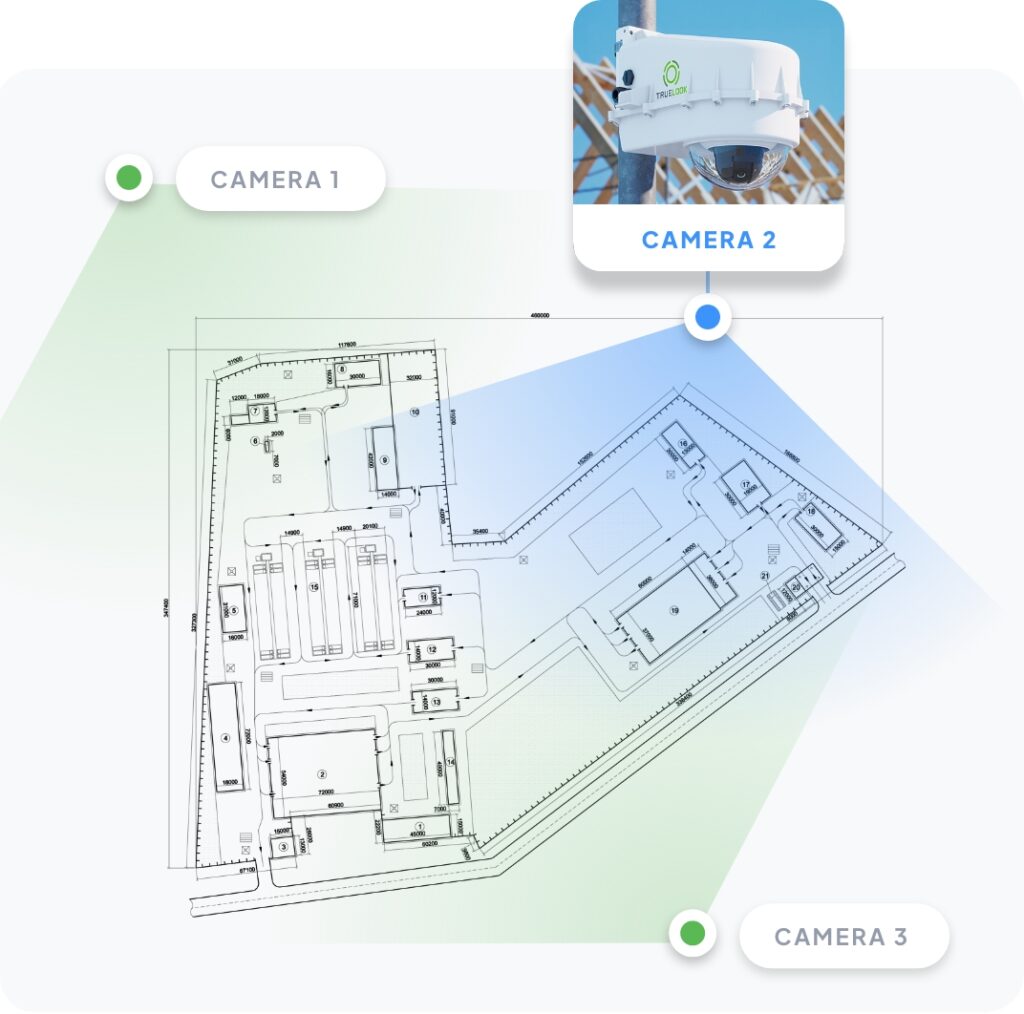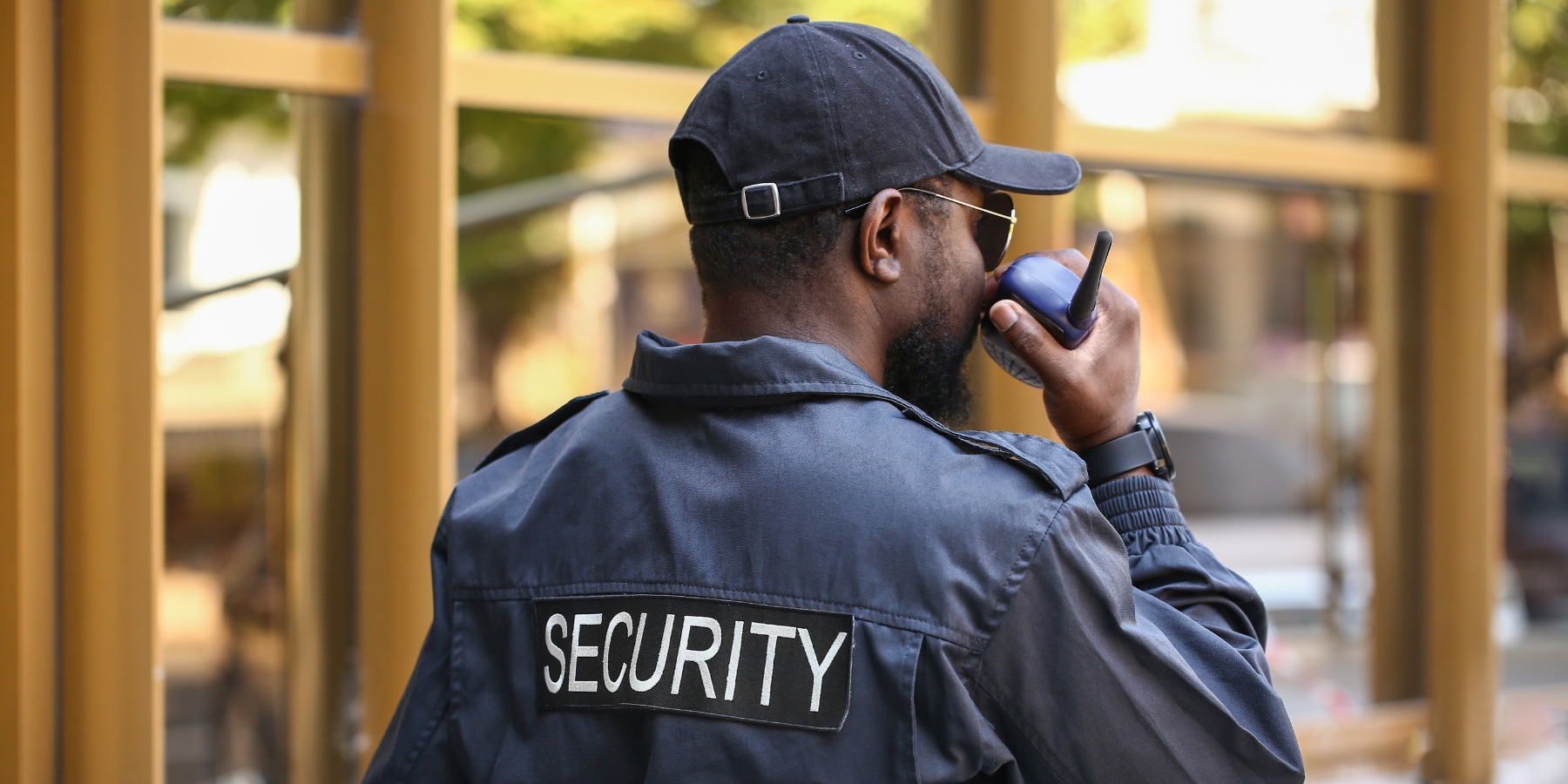Humans are builders; we love to see the creation of structures, from dirt plots to finished structures. Unfortunately, we’re also exceptionally talented at theft and destruction. Construction site theft alone accounts for over $1 billion in lost assets annually.
Criminals take or tag anything they can get their hands on, including work trucks, building materials, and tools. The average incident costs construction companies about $6,000, and over 90% of companies report experiencing theft.
Although insurance covers a large portion of those costs, a better practice is to avoid them in the first place. A construction site security plan is the blueprint for jobsite security, preventing theft and criminal incidents while ensuring worker safety through tactics and construction technology from industry leaders like TrueLook.

If you have concerns about construction site security, you’re in the right place. We explore why you need a site security plan, the various components of a successful one, and tips to support your long-term security efforts.
Why You Need a Construction Site Security Plan
If the potential loss of millions or even billions of dollars doesn’t terrify you, let’s explore why you need a more in-depth construction site security plan. Implementing a consistent system for securing construction sites ensures repeatable execution for every project, giving investors and insurance companies confidence that money, materials, and the workforce are secure.
Additionally, a security plan offers:
- Protection against theft and vandalism: Materials, expensive machinery, and valuable equipment are costly and often the target of thieves. Vandals also target construction sites since they usually don’t have occupants after dark.
- Worker and public safety: Construction sites are hazardous places for skilled tradespeople and downright dangerous for the unsuspecting public. A security plan mitigates liability should an incident occur on the jobsite.
- Compliance with regulations: Insurance companies and governing bodies like OSHA and the EPA visit construction sites to conduct audits and inspections. Comprehensive plans address concerns ahead of time, preventing fines or legal action for violations.
Combining systems, such as compliance platforms and construction cameras, creates a robust hardware and software-backed strategy for mitigating site risks. From the cost of replacing physical goods to the potential for injury, these are just a handful of reasons you need a construction site security plan.
Key Components of a Construction Site Security Plan
While every company will deploy a construction site security plan that works for them, these essential components should grace every plan, regardless of project size or site location.
Site Assessment and Risk Analysis
Critical analysis of a construction site before breaking ground is a foundational step in any security plan. It’s during this analysis that you consider the overall geographical location risk factors, such as traffic patterns, visibility, and proximity to high-crime areas.
You also want to consider site accessibility points, equipment value, incident history, and security device placement. This understanding guides the rest of your plan and gives you an overview of the security required throughout construction.
Perimeter Security
Perimeter security keeps criminals and the general public away from construction sites, preventing injury, theft, and vandalism. Each site should have a minimum 6-foot industry-standard fence with clear signage and security lights every 100 and 50 feet, respectively.
Gates should be commercial-grade in quality and installed with anti-tamper locks. You may also need additional perimeter security measures, like anti-climbing siding, concrete barriers, or motion-activated light sensors and construction cameras for incident recording.
Access Control Systems
Controlling who comes and goes from the site reduces incidents. Therefore, the minimum construction site security plan should include a sign-in/out process to monitor construction workers and prevent unauthorized entry. A better system would be electronic keycard entry or biometrics.
These digital systems allow you to track when individuals come and go, enabling you to track if someone comes back after hours. Digital tools also offer delivery verification systems to ensure on-time delivery and proper inventory management.
Lighting and Surveillance
Proper lighting with 10-foot candles in storage areas is a minimum for deterring criminal activity. To take things a step further, install camera surveillance.
Construction cameras paired with video surveillance put eyes on your construction site when you can’t physically be there, like after hours. Remote viewing options help you monitor many construction sites without leaving a central office.

Alarm Systems and Incident Reporting
In conjunction with lighting and surveillance, alarm systems and incident reporting pair additional advanced technology with older methods to better track and record when things happen.
For instance, a solution that offers both motion-sensing cameras and visual deterrents addresses security breaches more than a motion-sensing flashing light alone. More robust systems can even help lower insurance rates, as providers have more confidence that security is a priority.
Security Personnel
Remote security options are growing in functionality, but it’s hard to beat boots on the ground.

Depending on the location and project type, an in-person security guard could be necessary, and a trained professional serves as the first line of defense for your jobsite.
Implementing a Construction Site Security Plan
Now that we’ve covered construction security plan components and benefits, we bet you’re itching to put your own into action. These steps will take your plan from the blueprint to the construction site with as little friction as possible.
- Designate Security Responsibilities: Explain the importance of assigning clear roles to individuals to oversee site security. That includes reminding vendors, contractors, and subcontractors of the importance of complying with security and safety protocols.
- Use of Technology: Invest in high-quality construction cameras and surveillance equipment. To round out your technological toolbox, consider adding real-time monitoring and advanced incident reporting services.
- Regular Monitoring and Audits: Encourage routine inspections and audits of the security systems to ensure ongoing effectiveness. Consider running unscheduled tests to verify everything works.
- Emergency Response Plan: Outline the steps for creating an emergency response plan in case of security breaches or accidents. During your audit testing, verify responsible individuals know how to handle incidents.
As time passes, you will devise changes and modifications to your security plans, adjusting them to suit your needs. Of course, invest in continued training for your teams. Arming everyone with a bit of extra knowledge can go a long way in preventing a security incident.
Best Practices for Maintaining Security on Construction Sites
Your construction site security plan is well on its way to being a leading scaffold for equipment theft prevention. A few additional tips and tricks push plans from good to great, so bookmark this page for a reminder whenever things get challenging.
- Update Security Measures Regularly: Update and upgrade components of your security detail regularly.
- Train Employees on Security Protocols: Invest in training programs for every worker regardless of level to bring awareness and expectations to the top of their minds.
- Use TrueLook’s Data for Insights: TrueLook’s AI analytics and camera footage provide insights for improving security measures. A data-driven approach gives you a strategic edge against criminal activity.
Secure Your Construction Site with TrueLook
Between stolen materials and damages caused by criminals, the costs of an unsecured construction site can rack up quickly. To mitigate those risks, construction managers and company owners turn to site security plans with detailed instructions on creating safe and secure sites.
Through components like adequate lighting, security cameras, proper fencing, access control systems, and security guards, you create comprehensive, multi-layered security. Add advanced technology to the mix, and you have an unstoppable theft deterrent, detector, and responder.
Don’t trust multi-million dollar construction security to just anyone.
TrueLook’s best-in-class construction cameras and jobsite documentation tools enhance visibility and prevent thefts better than standalone solutions.

